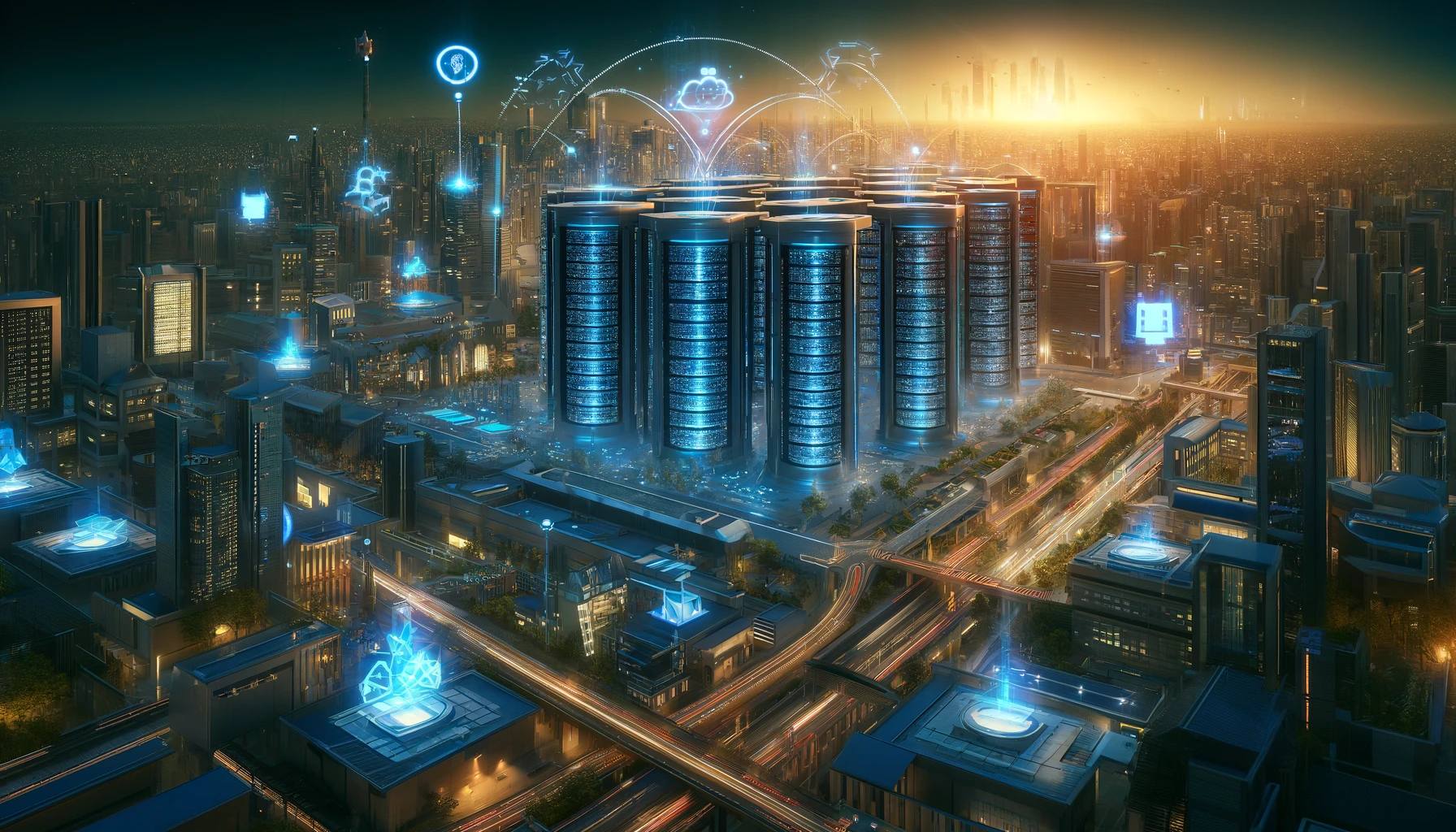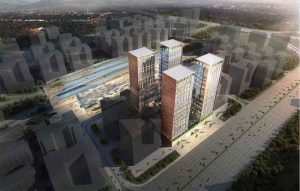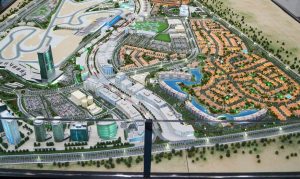A Deep Dive into Modular Data Center Design
In the ever-expanding digital landscape, data centers serve as the backbone of modern computing infrastructure, supporting the exponential growth of data generated by businesses, organizations, and individuals worldwide. Traditional data center architectures have long been characterized by large, monolithic facilities requiring extensive construction and operational resources. However, as the demand for agility, scalability, and efficiency continues to rise, a new paradigm has emerged: modular data center design.
Understanding Modular Data Centers
Modular data centers represent a departure from the conventional approach of constructing massive, purpose-built facilities. Instead, they embrace a modular architecture, where critical infrastructure components are prefabricated off-site and assembled in a plug-and-play fashion at the deployment site. This modular approach offers several advantages over traditional data center designs, including: 1. Rapid Deployment: Modular data centers can be deployed significantly faster than their traditional counterparts. By prefabricating key components such as server racks, cooling systems, and power distribution units in a controlled factory environment, deployment times are reduced from months to weeks or even days. This accelerated deployment capability is particularly beneficial for organizations with urgent computing needs or those operating in remote or challenging environments. 2. Scalability: Scalability is a cornerstone of modular data center design. Unlike traditional data centers, which often require extensive retrofitting or expansion projects to accommodate growth, modular data centers can scale seamlessly by adding or removing modular units as needed. This modular scalability allows organizations to align their infrastructure with fluctuating demand, optimizing resource utilization and minimizing upfront capital expenditures. 3. Cost Efficiency: Modular data centers offer significant cost savings compared to traditional data center builds. By standardizing components and leveraging economies of scale in manufacturing, modular designs can reduce upfront construction costs while also minimizing ongoing operational expenses. Additionally, the ability to scale infrastructure incrementally allows organizations to align expenses with revenue growth, avoiding over-provisioning and underutilization of resources. 4. Flexibility and Customization: Modular data centers provide greater flexibility and customization options compared to traditional builds. Organizations can tailor modular units to meet specific performance, capacity, and environmental requirements, whether deploying a standalone edge computing facility or augmenting existing data center infrastructure. This flexibility enables organizations to adapt quickly to changing business needs and technological advancements, future-proofing their investments in data center infrastructure.
Key Components of Modular Data Centers
Modular data centers comprise several key components, each playing a crucial role in the overall functionality and efficiency of the facility: 1. Modular Enclosures: Modular enclosures serve as the building blocks of modular data centers, housing critical infrastructure components such as server racks, cooling systems, and power distribution units. These prefabricated enclosures are typically designed for easy transportation and installation, featuring standardized dimensions and interfaces to facilitate modular expansion and integration. 2. Power and Cooling Systems: Efficient power and cooling systems are essential for maintaining optimal operating conditions within a data center environment. Modular data centers leverage innovative approaches to power distribution and cooling, such as modular UPS (Uninterruptible Power Supply) units, advanced air or liquid cooling solutions, and intelligent thermal management systems. These modular systems are designed for high efficiency and scalability, ensuring reliable performance and minimal environmental impact. 3. Connectivity and Networking: Connectivity is a critical aspect of modular data center design, enabling seamless communication and data exchange between distributed computing resources. Modular data centers feature robust networking infrastructure, including high-speed interconnects, redundant network fabrics, and software-defined networking (SDN) capabilities. These modular networking solutions support agile deployment and dynamic resource allocation, optimizing performance and reliability in diverse operating environments. 4. Monitoring and Management: Comprehensive monitoring and management capabilities are essential for ensuring the reliability, security, and efficiency of modular data centers. Advanced monitoring tools and centralized management platforms provide real-time visibility into critical infrastructure metrics, enabling proactive identification and resolution of issues. Modular data centers leverage intelligent automation and analytics to optimize resource utilization, improve energy efficiency, and streamline operational workflows.
Applications and Use Cases
Modular data centers are well-suited for a wide range of applications and use cases across various industries:<
1. Edge Computing: Edge computing deployments require computing resources to be located closer to the point of data generation or consumption, enabling low-latency processing and real-time decision-making. Modular data centers offer a cost-effective and scalable solution for deploying edge computing infrastructure in remote or distributed locations, supporting applications such as IoT (Internet of Things), content delivery, and autonomous vehicles. 2. Disaster Recovery and Business Continuity: Modular data centers provide an ideal platform for disaster recovery and business continuity initiatives, allowing organizations to replicate critical infrastructure in geographically dispersed locations. By deploying modular data centers in strategic locations, organizations can ensure data redundancy, minimize downtime, and maintain operational continuity in the event of natural disasters, cyberattacks, or other disruptions. 3. Temporary and Mobile Deployments: Temporary or mobile deployments, such as temporary events, construction sites, or military operations, require flexible and rapidly deployable computing infrastructure. Modular data centers offer a portable and self-contained solution for temporary deployments, featuring compact form factors, ruggedized construction, and integrated power and cooling systems. These modular deployments enable organizations to rapidly establish computing capabilities in remote or temporary environments, supporting mission-critical operations with minimal logistical overhead. 4. Cloud and Colocation: Cloud service providers and colocation facilities are increasingly adopting modular data center designs to meet the growing demand for scalable and agile computing services. Modular data centers enable cloud providers to rapidly expand their infrastructure footprint, deploy edge locations, and optimize resource utilization across distributed data centers. Colocation facilities leverage modular designs to offer customizable and cost-effective hosting solutions to their customers, accommodating diverse workloads and service-level agreements (SLAs) with ease.
Challenges and Considerations
While modular data centers offer numerous benefits, they also present unique challenges and considerations that organizations must address: 1. Integration and Interoperability: Integrating modular data center components with existing infrastructure and systems can pose challenges related to compatibility, interoperability, and performance. Organizations must carefully evaluate integration requirements and ensure seamless communication between modular units and centralized management platforms to avoid operational complexities and potential performance bottlenecks. 2. Regulatory Compliance and Security: Compliance with regulatory requirements and security standards is paramount in modular data center deployments, particularly in industries such as finance, healthcare, and government. Organizations must assess regulatory compliance obligations and implement robust security measures to protect sensitive data and ensure regulatory compliance across modular deployments. 3. Lifecycle Management and Upgradability: Effective lifecycle management and upgradability are essential for maximizing the longevity and value of modular data center investments. Organizations must establish proactive maintenance schedules, upgrade paths, and decommissioning strategies to mitigate the risk of obsolescence and ensure continued performance and reliability over the lifecycle of modular deployments. 4. Environmental Sustainability: Environmental sustainability is a growing concern for data center operators, driven by increasing energy consumption and carbon emissions associated with IT infrastructure. While modular data centers offer potential energy savings and operational efficiencies, organizations must adopt environmentally responsible practices, such as energy-efficient cooling technologies, renewable energy sources, and sustainable materials, to minimize their carbon footprint and promote environmental sustainability.
Conclusion
Modular data center design represents a paradigm shift in the way organizations plan, deploy, and manage computing infrastructure. By embracing modular architectures, organizations can achieve greater agility, scalability, and efficiency in their data center operations, enabling them to meet the evolving demands of digital business in a sustainable and cost-effective manner. The flexibility and versatility of modular data centers make them well-suited for a wide range of applications, from edge computing and disaster recovery to temporary deployments and cloud hosting.
However, the adoption of modular data center design also brings its share of challenges, including integration complexities, regulatory compliance, lifecycle management, and environmental sustainability. Addressing these challenges requires careful planning, investment in robust infrastructure, and adherence to best practices in design, deployment, and operation.
As organizations continue to embrace digital transformation and the demand for computing resources grows unabated, modular data center design is poised to play a pivotal role in shaping the future of data infrastructure. By leveraging the benefits of modularity, organizations can achieve greater agility, resilience, and efficiency, empowering them to stay ahead in an increasingly competitive and dynamic business landscape.
In conclusion, modular data center design represents a significant evolution in the field of data infrastructure, offering organizations a scalable, flexible, and cost-effective solution to meet their computing needs. With careful planning, integration, and management, modular data centers can deliver unparalleled agility, reliability, and efficiency, driving innovation and enabling organizations to thrive in the digital age.


















